-
ORIGINAL ARTICLE08-08-2022
(Re)Construction of the body of transgender women: daily search for (in)satisfaction and care?
Revista Brasileira de Enfermagem. 2022;75(6):e20210512
Abstract
ORIGINAL ARTICLE(Re)Construction of the body of transgender women: daily search for (in)satisfaction and care?
Revista Brasileira de Enfermagem. 2022;75(6):e20210512
DOI 10.1590/0034-7167-2021-0512
Views1See moreABSTRACT
Objective:
To analyze the structure and contents of transgender women’s social representations of their bodies and body modification practices.
Methods:
Research conducted with 92 women using the Snowball technique. The data were collected using the free evocation of words technique and processed by the Evoc software, which organized the central and peripheral elements.
Results:
The representation of the real body includes two structuring aspects: one related to the need to adapt/modify the body conformation according to the self-reported gender, because of the dissatisfaction with the body itself; the second reveals the happiness/satisfaction considering the results obtained through the body modification/adaptation practices adopted in the transition.
Final considerations:
The body is constituted as a complex object and was represented by elements that reinforce the understanding of body modifications as needs, with a view to satisfaction, personal fulfillment, and care of one’s own body.
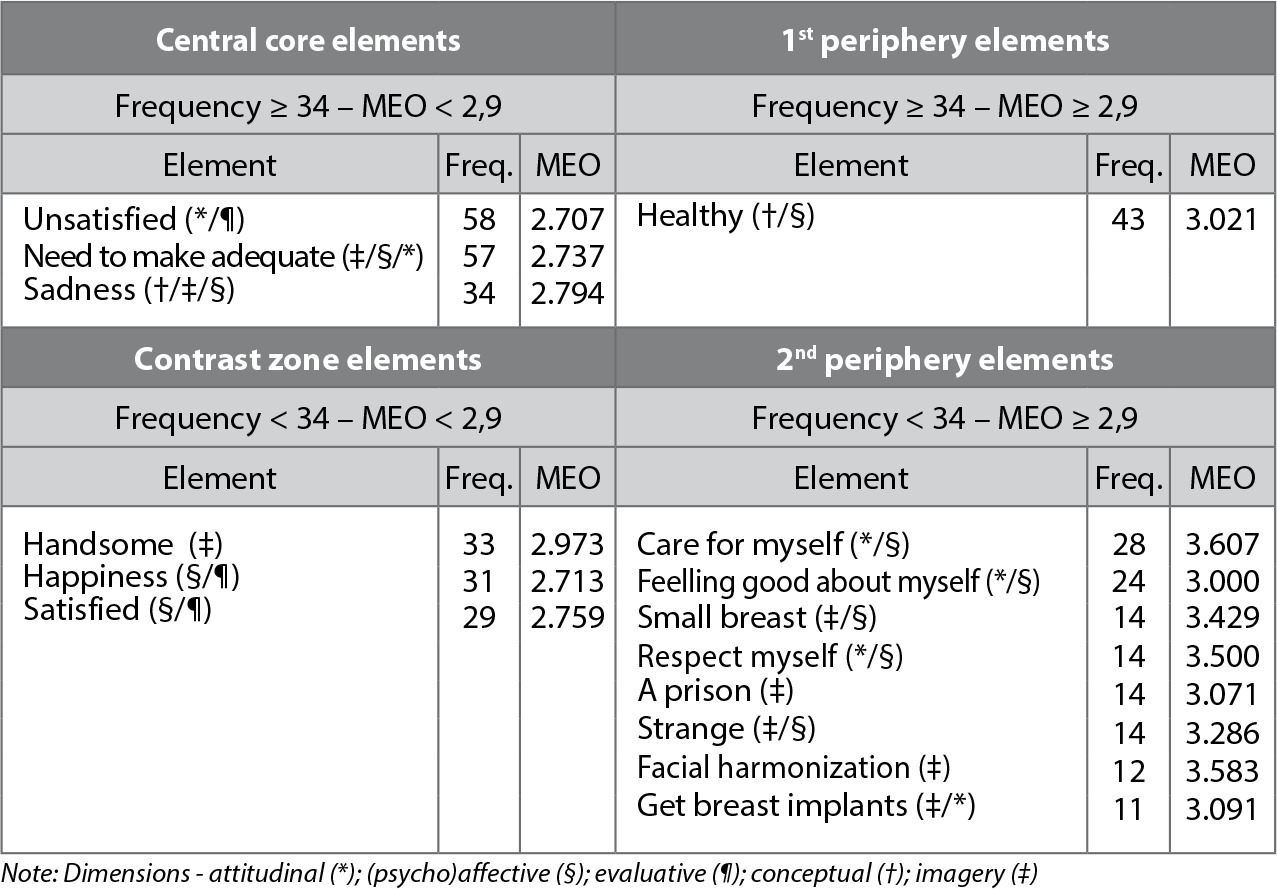
-
ORIGINAL ARTICLE08-08-2022
Social and territorial inequalities in the mortality of children and adolescents due to COVID-19 in Brazil
Revista Brasileira de Enfermagem. 2022;75(6):e20210482
Abstract
ORIGINAL ARTICLESocial and territorial inequalities in the mortality of children and adolescents due to COVID-19 in Brazil
Revista Brasileira de Enfermagem. 2022;75(6):e20210482
DOI 10.1590/0034-7167-2021-0482
Views0See moreABSTRACT
Objective:
To analyze the mortality rate of COVID-19 among children and adolescents aged 0 to 14 years.
Methods:
Ecological and exploratory study of children’s mortality rate by COVID-19 in Brazil, from February to October 2020. The study used the Severe Acute Respiratory Syndrome database to collect the data and made the analysis using descriptive spatial statistics by age and race/color classification.
Result:
The mortality rate due to COVID-19 represented 1.34 deaths per one hundred thousand in the total group evaluated. The age group with the highest frequency and mortality rate was 1 to 4 years of age. There is a higher frequency of deaths in the brown and Indigenous population.
Conclusion:
The distribution of deaths due to COVID-19 is unequal in the national territory, and there is a wide variation in the mortality rate by age and race/color groups.
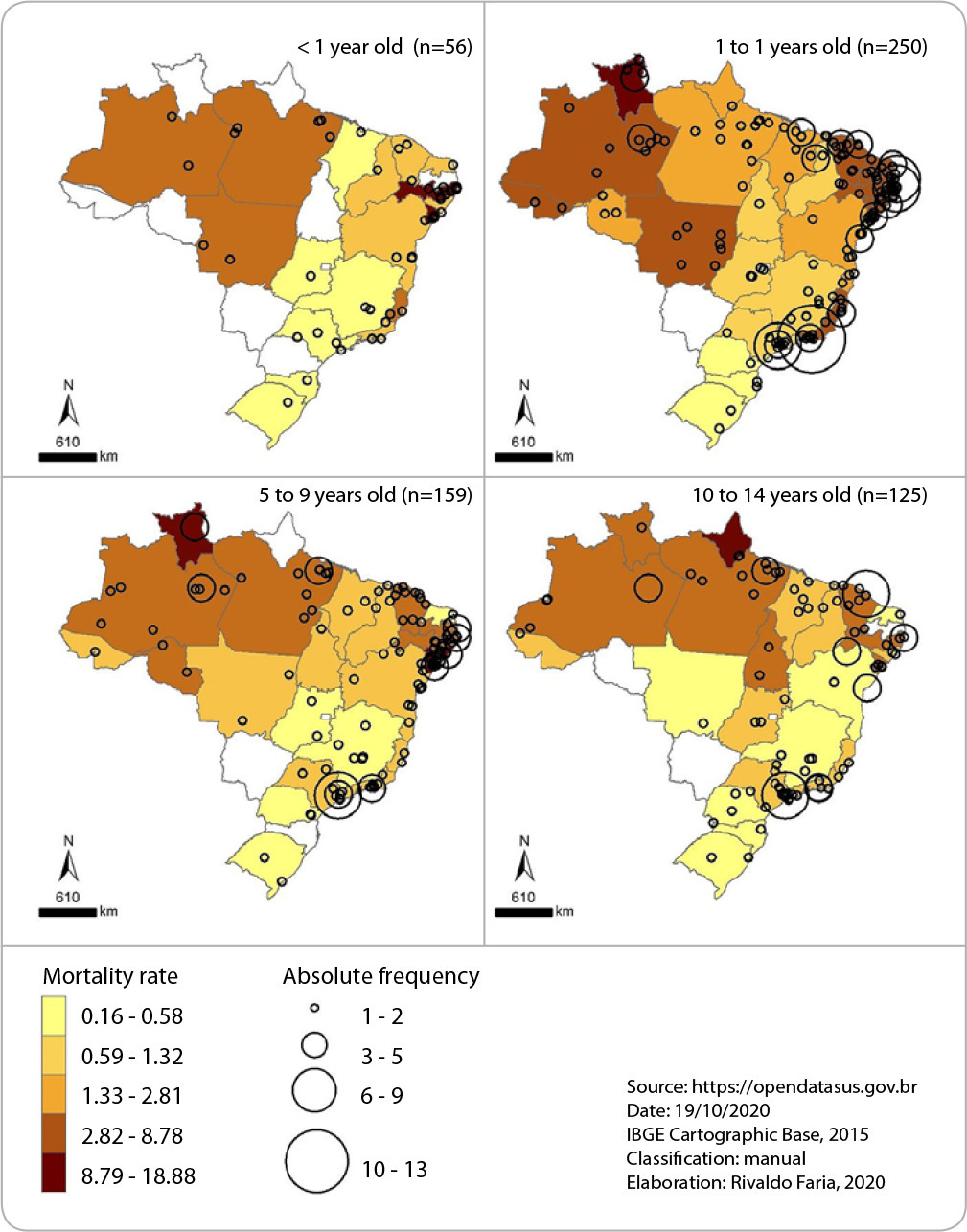
-
ORIGINAL ARTICLE08-08-2022
Repercussions of COVID-19 on the daily lives of women living in a rural settlement
Revista Brasileira de Enfermagem. 2022;75(6):e20220021
Abstract
ORIGINAL ARTICLERepercussions of COVID-19 on the daily lives of women living in a rural settlement
Revista Brasileira de Enfermagem. 2022;75(6):e20220021
DOI 10.1590/0034-7167-2022-0021
Views0See moreABSTRACT
Objective:
To understand the repercussions of COVID-19 on women’s daily lives in a rural settlement.
Methods:
A qualitative study was conducted in a rural settlement of the Landless Workers’ Movement (MST) in a municipality in Northeastern Brazil between January and March 2021. Forty-eight women participated through semi-structured interviews. The data collected were analyzed by the Collective Subject Discourse method in light of the referential of pandemic processes.
Results:
The grouping of the speeches unveiled similar and/or complementary meanings about the coping strategies and the feelings generated due to the pandemic. Four Central Ideas were organized: denial to progressive awareness; Perception of the problem, acceptance, and explanation of reality; Negotiation; and Retrospection/reflection.
Conclusion:
The pandemic repercussions are intrinsically related to an inhospitable reality from the perspective of the experience of women daily forgotten, marginalized, and suppressed.
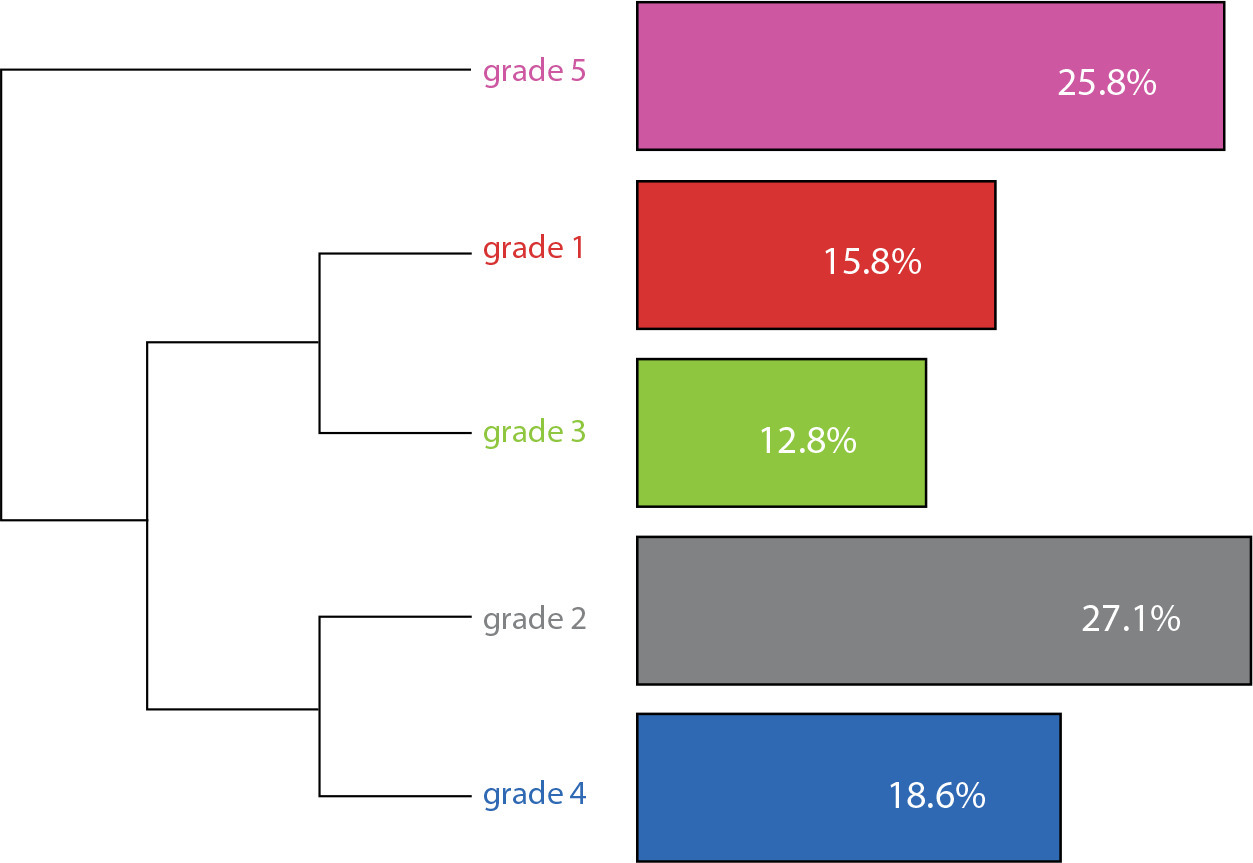
-
ORIGINAL ARTICLE08-08-2022
Factors associated with frailty syndrome in elderly people with Parkinson’s disease
Revista Brasileira de Enfermagem. 2022;75:e20220096
Abstract
ORIGINAL ARTICLEFactors associated with frailty syndrome in elderly people with Parkinson’s disease
Revista Brasileira de Enfermagem. 2022;75:e20220096
DOI 10.1590/0034-7167-2022-0096
Views0See moreABSTRACT
Objectives:
to analyze the sociodemographic and clinical factors associated with frailty in the elderly with Parkinson’s disease in the context of a Specialized Health Care Service for the Elderly.
Methods:
documentary, analytical, correlational, cross-sectional study carried out with 230 elderly people with Parkinson’s. The medical records of the patients were evaluated with a focus on two instruments: Clinical-Functional Vulnerability Index – 20; and the Multidimensional Assessment Care Plan.
Results:
predominance of elderly people between 80 and 89 years old; women; with low education; classified as fragile. There was a correlation between frailty and the variables: sex; age; age group; schooling; motor manifestations; non-motor manifestations; Hoehn and Yahr staging and time to diagnosis.
Conclusions:
high simultaneity of frailty conditions and Parkinson’s disease was observed. It is believed that the results will be able to help the structuring of protocols for nursing performance in a systematic way in the promotion of self-care of these individuals.

-
ORIGINAL ARTICLE08-08-2022
Sexual function positively correlated with older adults’ sexuality and quality of life
Revista Brasileira de Enfermagem. 2022;75:e20210939
Abstract
ORIGINAL ARTICLESexual function positively correlated with older adults’ sexuality and quality of life
Revista Brasileira de Enfermagem. 2022;75:e20210939
DOI 10.1590/0034-7167-2021-0939
Views0See moreABSTRACT
Objectives:
to analyze sexual function and its correlation with sexuality and quality of life in male older adults.
Methods:
a cross-sectional study, developed with 231 male older adults. Participants completed four instruments to obtain biosociodemographic data, sexual function, sexuality and quality of life. Analyzes were performed using the Mann-Whitney test and Spearman Correlation.
Results:
sexual function was positively correlated with sexuality in a moderate magnitude and with quality of life in a low magnitude. Male older adults without sexual dysfunction experienced their sexuality better and had a better quality of life. Finally, partner overall satisfaction was the facet of sexual function that had the highest positive correlation with sexuality, while self-confidence had the highest positive correlation with quality of life.
Conclusions:
we suggest that sexual function should be addressed more frequently in Primary Health Care services, as we found statistically significant correlations with sexuality and quality of life components.
-
REVIEW08-08-2022
Non-pharmacological analgesia strategies in adult and elderly endovascular procedures: a scoping review
Revista Brasileira de Enfermagem. 2022;75:e20210741
Abstract
REVIEWNon-pharmacological analgesia strategies in adult and elderly endovascular procedures: a scoping review
Revista Brasileira de Enfermagem. 2022;75:e20210741
DOI 10.1590/0034-7167-2021-0741
Views0See moreABSTRACT
Objectives:
To identify the main non-pharmacological analgesia strategies used in clinical practice in adult and elderly endovascular procedures.
Methods:
scoping review, undertaken in July 2021, on 12 national and international data sources. The recommendations of the JBI and the Preferred Reporting Items for Systematic reviews and Meta-Analyses extension for Scoping Reviews checklist were followed. Thirteen studies were selected to compose the sample, with no time or language cut-off.
Results:
the main non-pharmacological strategies found were cold compress, use of music, and reflexology. The most prevalent procedures were coronary angiography, peripheral venous catheterization, and femoral catheter removal. Pain measurement by Visual Numeric Scale and Visual Analog Scale described pain reduction in adults and elderly.
Conclusions:
the main non-pharmacological strategies found were cold compress, use of music, and reflexology, which reduce pain in adults and the elderly.
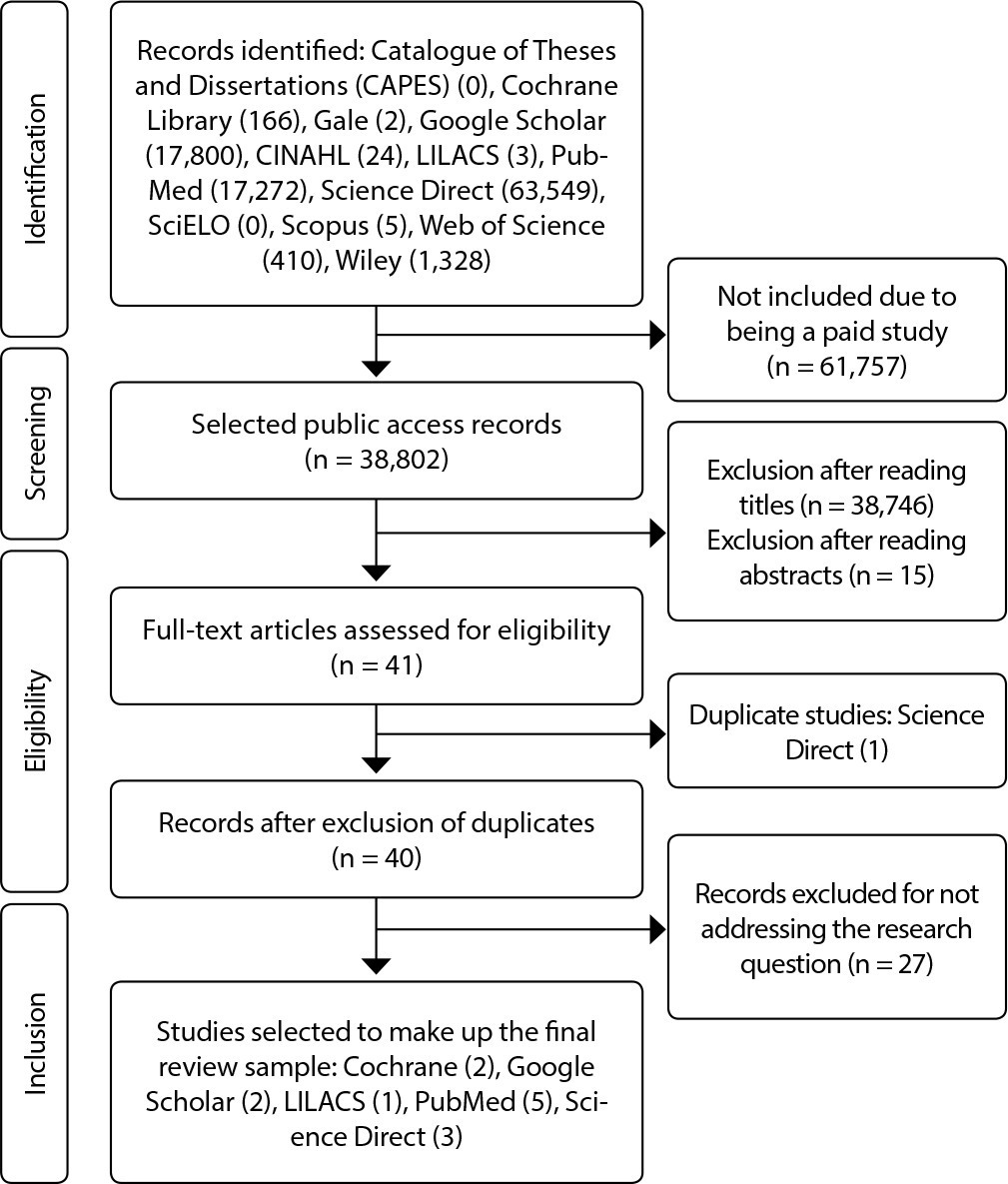
-
08-01-2022
Monkeypox: between precision public health and stigma risk
Revista Brasileira de Enfermagem. 2022;75(5):e750501
Abstract
Monkeypox: between precision public health and stigma risk
Revista Brasileira de Enfermagem. 2022;75(5):e750501
DOI 10.1590/0034-7167.2022750501
Views0The World Health Organization (WHO) is on alert due to an unprecedented Monkeypox outbreak in non-endemic countries, such as Europe, which have been affected recently. Despite the low pandemic potential, the recent SARS-CoV-2 pandemic has contributed to heightened levels of public concern in the face of the threat of new global health emergencies().As of May […]See more -
08-01-2022
Viruela del mono: entre la salud pública de precisión y el riesgo de estigma
Revista Brasileira de Enfermagem. 2022;75(5):e750501
Abstract
Viruela del mono: entre la salud pública de precisión y el riesgo de estigma
Revista Brasileira de Enfermagem. 2022;75(5):e750501
DOI 10.1590/0034-7167.2022750501es
Views0La Organización Mundial de la Salud (OMS) está alerta debido a un brote sin precedentes de Monkeypox, también conocida como viruela del mono, en países no endémicos, como Europa, que se han visto afectados recientemente. A pesar del bajo potencial pandémico, la reciente pandemia de SARS-CoV-2 ha contribuido a aumentar los niveles de preocupación pública […]See more
-
ORIGINAL ARTICLE08-19-2019
Mobile application for the teaching of the International Classification for Nursing Practice
Revista Brasileira de Enfermagem. 2019;72(4):1020-1027
Abstract
ORIGINAL ARTICLEMobile application for the teaching of the International Classification for Nursing Practice
Revista Brasileira de Enfermagem. 2019;72(4):1020-1027
DOI 10.1590/0034-7167-2018-0751
Views0See moreABSTRACT
Objective:
Developing a mobile application for the teaching of the International Classification for Nursing Practice.
Methods:
Methodological applied research for technological production, performed in three phases of the contextualized instructional design model: analysis, design and development.
Results:
The application has an initial screen, which provides information about the team and its purpose. Then, four moblets are listed, including presentation, user’s guide consisting of five modules, educational games and five clinical cases. The references on which the application was based are also presented.
Final considerations:
It was possible to develop an application with the potential to promote the knowledge of nursing students and professionals about this classification system.
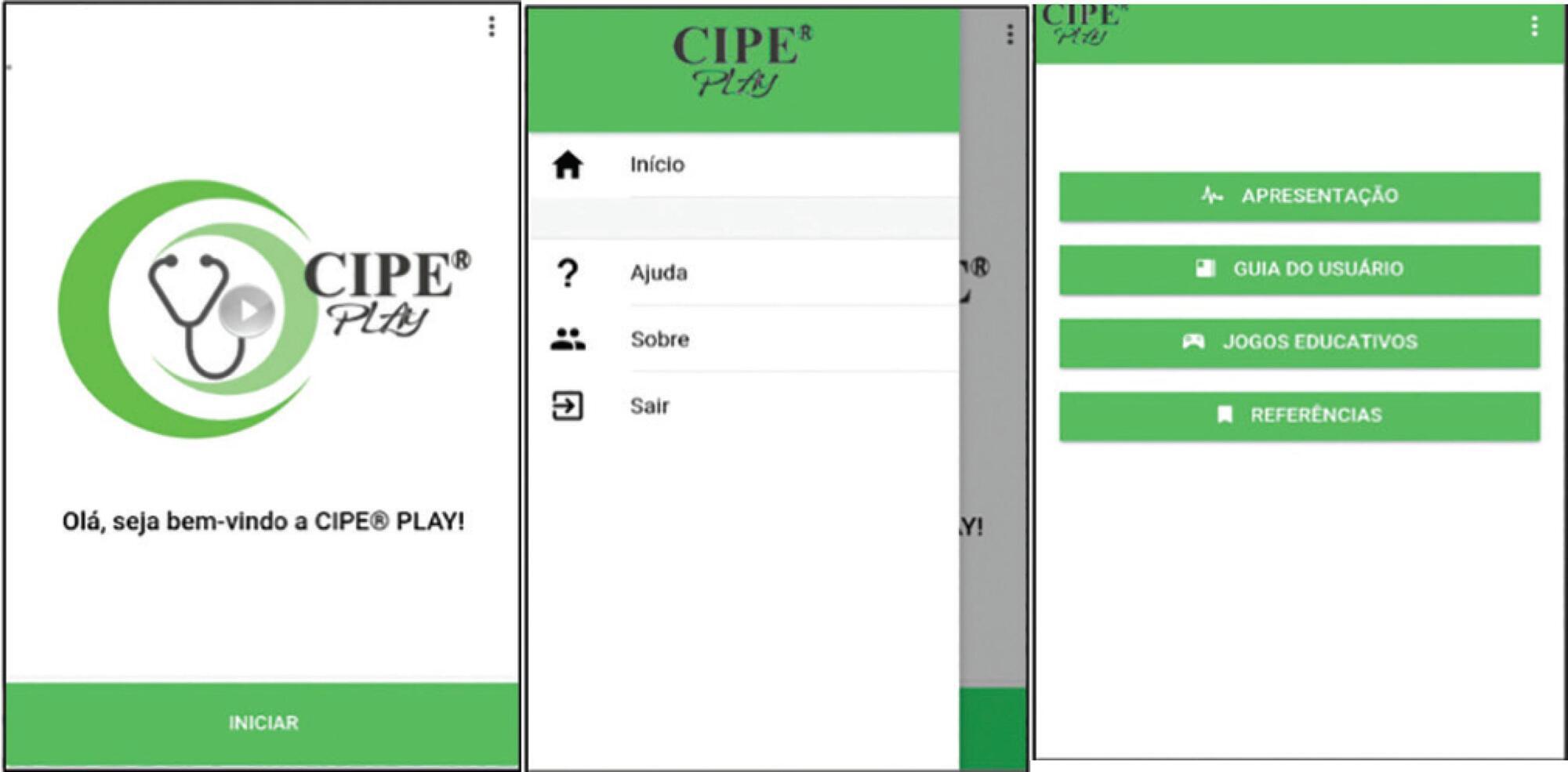
-
ORIGINAL ARTICLE08-14-2020
Education to prevent ventilator-associated pneumonia in intensive care unit
Revista Brasileira de Enfermagem. 2020;73(6):e20190477
Abstract
ORIGINAL ARTICLEEducation to prevent ventilator-associated pneumonia in intensive care unit
Revista Brasileira de Enfermagem. 2020;73(6):e20190477
DOI 10.1590/0034-7167-2019-0477
Views0INTRODUCTIONVentilator-Associated Pneumonia (VAP) is one of the complications related to the care of patients hospitalized in the Intensive Care Unit (ICU), which, according to consulted authors, exceeds the mortality rates of other Healthcare Related Infections (HRI). VAP is the second most frequent infection in patients admitted to the ICU, as well as the most prevalent […]See more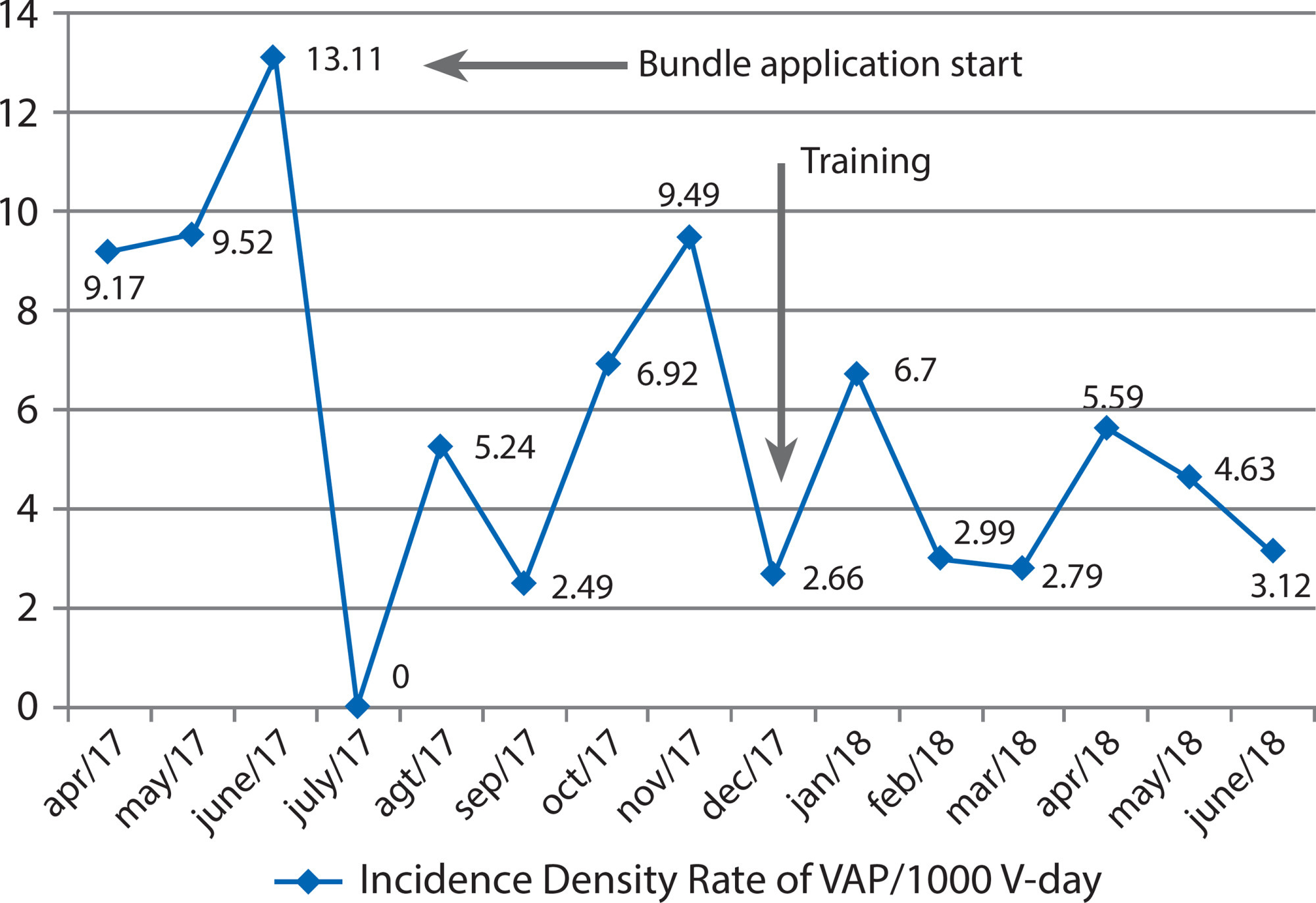
-
08-19-2019
Degree in Nursing: education through problem-based learning
Revista Brasileira de Enfermagem. 2019;72(4):1071-1077
Abstract
Degree in Nursing: education through problem-based learning
Revista Brasileira de Enfermagem. 2019;72(4):1071-1077
DOI 10.1590/0034-7167-2018-0298
Views0See moreABSTRACT
Objective:
To describe how undergraduate courses in Nursing are using the problem-based learning (PBL).
Method:
Integrative literature review, from searches in the databases Education Resources Information Center (ERIC), Latin American and Caribbean Health Sciences Literature (Lilacs), and PubMed, from 2010 to 2015. 36 articles were analyzed.
Results:
A teaching method used in all continents, the PBL enables improvement of the critical thinking, autonomy, motivation for learning, active search attitude, ability to work in teams, and problem-solving. Difficulties and challenges relate to the training of students and teachers to understand the principles of the method.
Final considerations:
The benefits of PBL coincide with the needs of nursing training, but its applicability demands constant review in seeking to develop the skills necessary for this training.
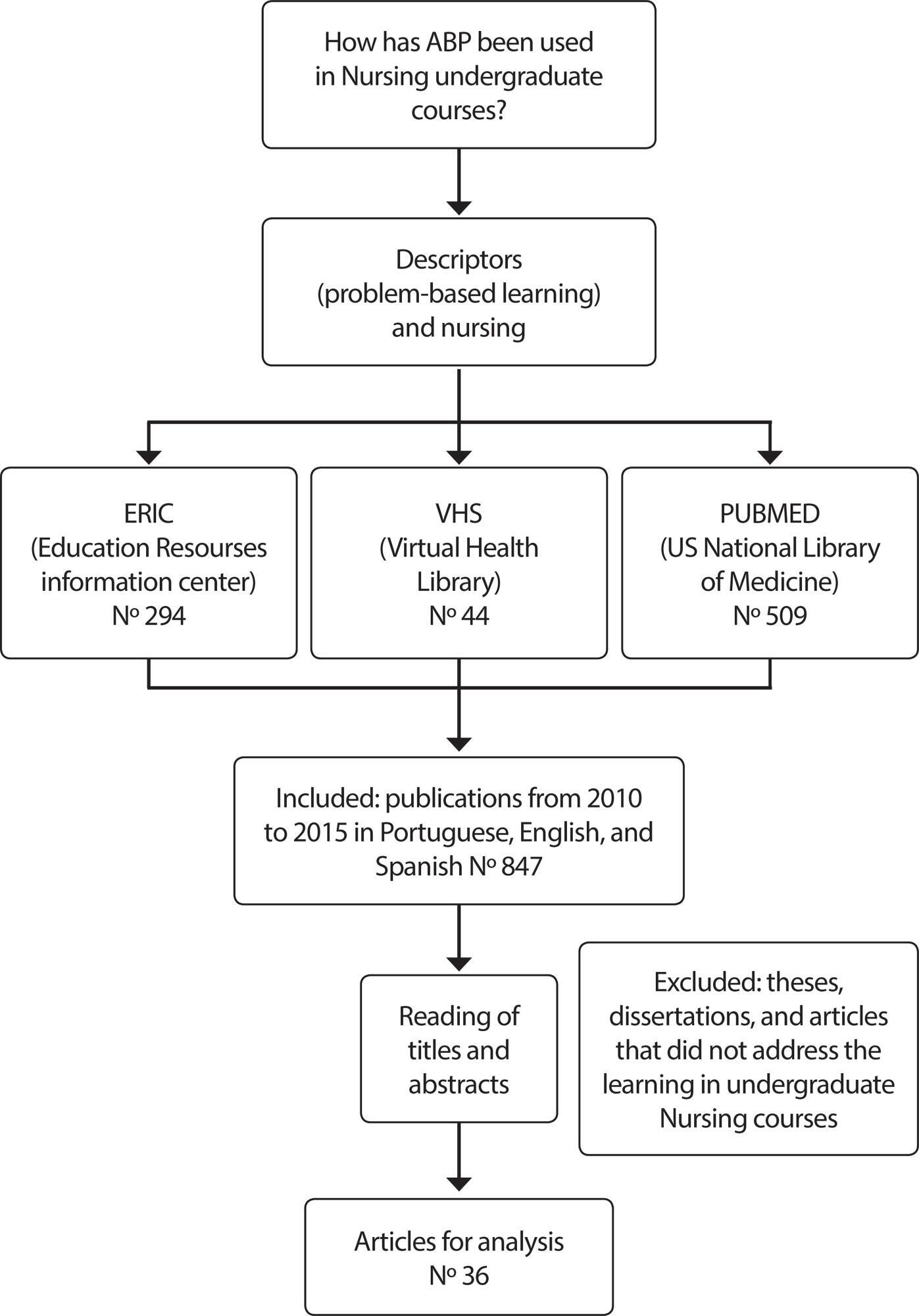
-
ORIGINAL ARTICLE12-13-2019
Mobile health technology for gestational care: evaluation of the GestAção’s app
Revista Brasileira de Enfermagem. 2019;72:266-273
Abstract
ORIGINAL ARTICLEMobile health technology for gestational care: evaluation of the GestAção’s app
Revista Brasileira de Enfermagem. 2019;72:266-273
DOI 10.1590/0034-7167-2018-0641
Views0See moreABSTRACT
Objective:
to evaluate the GestAção application, based on the experience of pregnant women use.
Method:
an evaluative, applied, methodological, quantitative-qualitative study. This tool was evaluated by 13 pregnant women through questionnaires for sociodemographic profile characterization and Likert scale use to calculate Content Validity Index (CVI); and semi-structured interview, with analysis based on Semiotics.
Results:
the study evidenced a significant level of satisfaction of pregnant women with the application use, considering the objectives (CVI = 0.92), structure and presentation (CVI = 0.86), and relevance (CVI = 0.92).
Final considerations:
the GestAção application obtained an overall CVI of 0.90, evidencing it as a facilitating and supporting technology in the empowerment of pregnant women interested in obtaining knowledge about pregnancy. It has been proved to be a powerful tool to qualify good practices in nursing consultation.
-
REFLECTION06-29-2020
Children’s (in)visibility in social vulnerability and the impact of the novel coronavirus (COVID-19)
Revista Brasileira de Enfermagem. 2020;73:e20200302
Abstract
REFLECTIONChildren’s (in)visibility in social vulnerability and the impact of the novel coronavirus (COVID-19)
Revista Brasileira de Enfermagem. 2020;73:e20200302
DOI 10.1590/0034-7167-2020-0302
Views0See moreABSTRACT
Objective:
To examine the impact of the infection by the novel coronavirus on Brazilian children in situation of social vulnerability based on the Millennium Sustainable Development Goals.
Method:
Reflective study based on discursive formulation in three aspects: principles of the objectives and goals for the millennium sustainable development; impact of the pandemic on the health of children and their families living in social vulnerability; and the role of pediatric nursing in the care provided – limits and challenges.
Results:
In January 2020, the news of COVID 19 is released as a pandemic. In Brazil, children and families are still without access to basic rights, thereby increasing their risks of social vulnerability because of the quarantine. The nursing field has an important role in monitoring children and their families, offering guidance in search for solutions and preventing contamination.
Conclusion:
There are still challenges to be overcome by the children and their families in situations of vulnerability against COVID-19.
-
ORIGINAL ARTICLE07-10-2020
Profile of nursing students: quality of life, sleep and eating habits
Revista Brasileira de Enfermagem. 2020;73:e20190365
Abstract
ORIGINAL ARTICLEProfile of nursing students: quality of life, sleep and eating habits
Revista Brasileira de Enfermagem. 2020;73:e20190365
DOI 10.1590/0034-7167-2019-0365
Views0See moreABSTRACT
Objective:
to profile and analyze sleep quality, quality of life and eating habits of nursing students.
Methods:
a cross-sectional, comparative and correlational study with the following variables: sociodemographic characteristics, Pittsburgh sleep quality index, quality of life and eating habits. One hundred ninety-five students participated in the study.
Results:
participants were on average 24 years old. Results showed that females were prevalent (87.1%); 71.0% of the students had poor sleep quality; 98.9% used electronic devices before bedtime. Self-perception of quality of life was indifferent (38.3%), and self-perception of general health, 36.9% expressed satisfaction. Among the participants, 45.13% consumed one portion of fruit and 40.66% two to three portions of vegetables daily.
Conclusion:
the study allowed the profile of these students, sedentary, overweight and poor sleep quality young students who studied and worked.
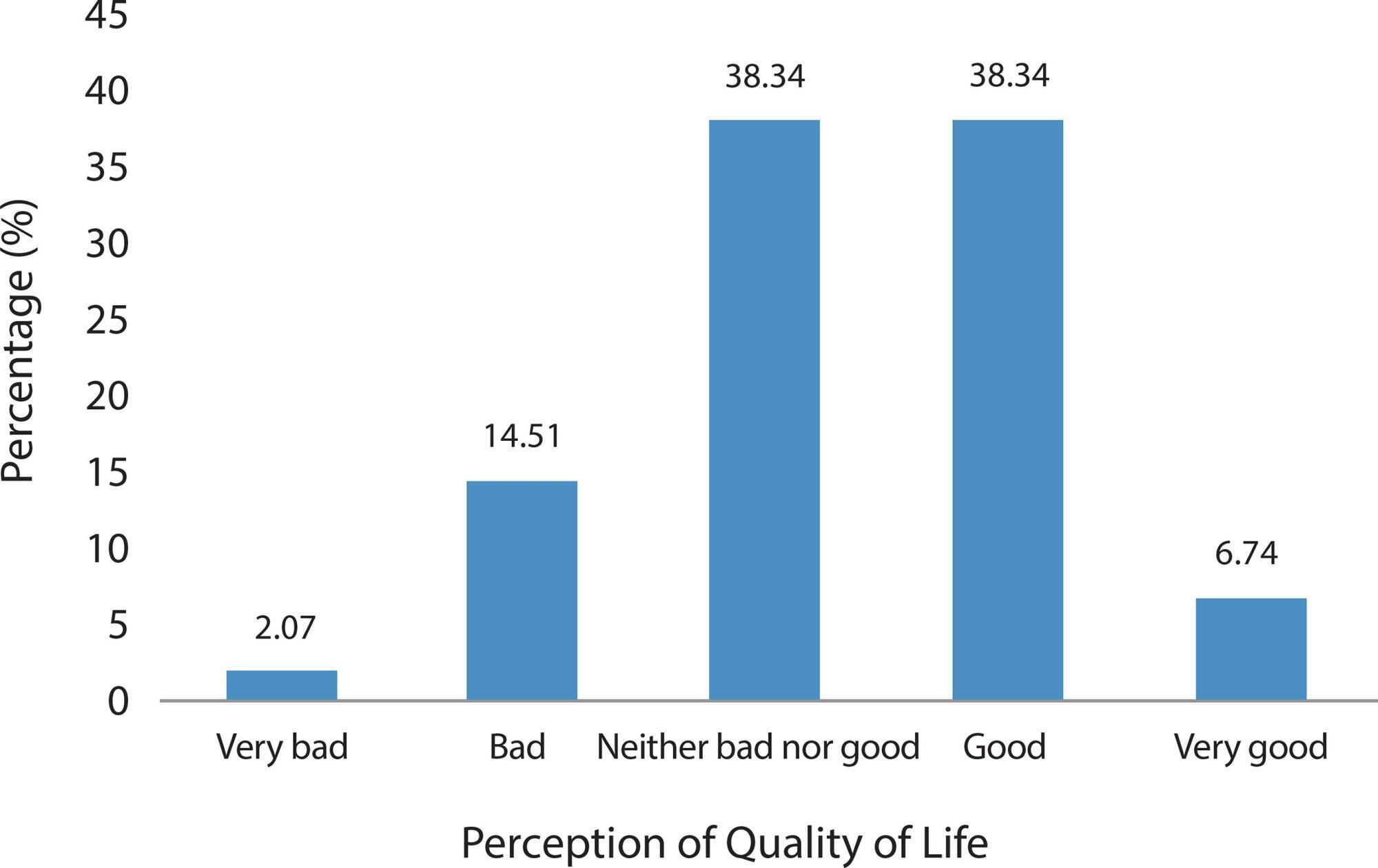
-
ORIGINAL ARTICLE06-09-2020
Stress of nursing professionals working in pre-hospital care
Revista Brasileira de Enfermagem. 2020;73(2):e20180660
Abstract
ORIGINAL ARTICLEStress of nursing professionals working in pre-hospital care
Revista Brasileira de Enfermagem. 2020;73(2):e20180660
DOI 10.1590/0034-7167-2018-0660
Views0See moreABSTRACT
Objectives:
To analyze the factors related to the occupational stress of a Mobile Emergency Care Service (Samu) nursing team.
Methods:
This is a descriptive study, with a quantitative approach, performed with nursing professionals from Samu service of a city of Pernambuco. A sociodemographic questionnaire and the Lipp’s Stress Symptom Inventory were used.
Results:
The participants presenting stress (24.6%) were classified in the phases: resistance (19.7%), exhaustion (4.4%) and near exhaustion (0.5%). It was also observed an association of stress level with the following factors: gender, sleep quality, professional autonomy restriction, emotional exhaustion with work performed and work in inadequate or unhealthy physical facilities.
Conclusions:
Although showing low occurrence of stress, this study pointed out the profile that presents the highest risk of developing occupational stress, through the factors significantly associated with stress in the studied population.
-
ORIGINAL ARTICLE07-10-2020
Nursing appeals on social media in times of coronavirus
Revista Brasileira de Enfermagem. 2020;73:e20200225
Abstract
ORIGINAL ARTICLENursing appeals on social media in times of coronavirus
Revista Brasileira de Enfermagem. 2020;73:e20200225
DOI 10.1590/0034-7167-2020-0225
Views0See moreABSTRACT
Objective:
to know and analyze the nursing appeals on social media during the COVID-19 pandemic.
Method:
it is a documentary, qualitative, descriptive, and exploratory research with data collected in publications in two social media. Two hundred ninety-five publications of nursing professionals published on Twitter and Instagram between March 11 and 20, 2020 were submitted to content analysis using ATLAS.ti resources.
Results:
four thematic categories emerged: #stayathome, #whereismyPPE, #nowweareheroes, #nothingnewinthefrontline, according to frequency of communications. The appeals show a relationship with the social relevance of nursing professional work and with the conditions required for its exercise.
Final considerations:
old and new challenges of the profession were placed on the agenda in social media, especially related to the workforce and instruments of labor. These speeches can serve as a foundation for policies to improve working conditions and promote appreciation of the profession.

Search
Search in:
Nuvem de Tags
Adolescente (85) Atenção Primária à Saúde (239) COVID-19 (91) Criança (91) Cuidados de Enfermagem (269) Educação em Enfermagem (151) Educação em Saúde (139) Enfermagem (930) Enfermagem Pediátrica (86) Estudantes de Enfermagem (77) Estudos de Validação (131) Família (87) Idoso (208) Promoção da Saúde (99) Qualidade de Vida (104) Saúde do Trabalhador (86) Saúde Mental (145) Saúde Pública (82) Segurança do Paciente (150) Tecnologia Educacional (100)



